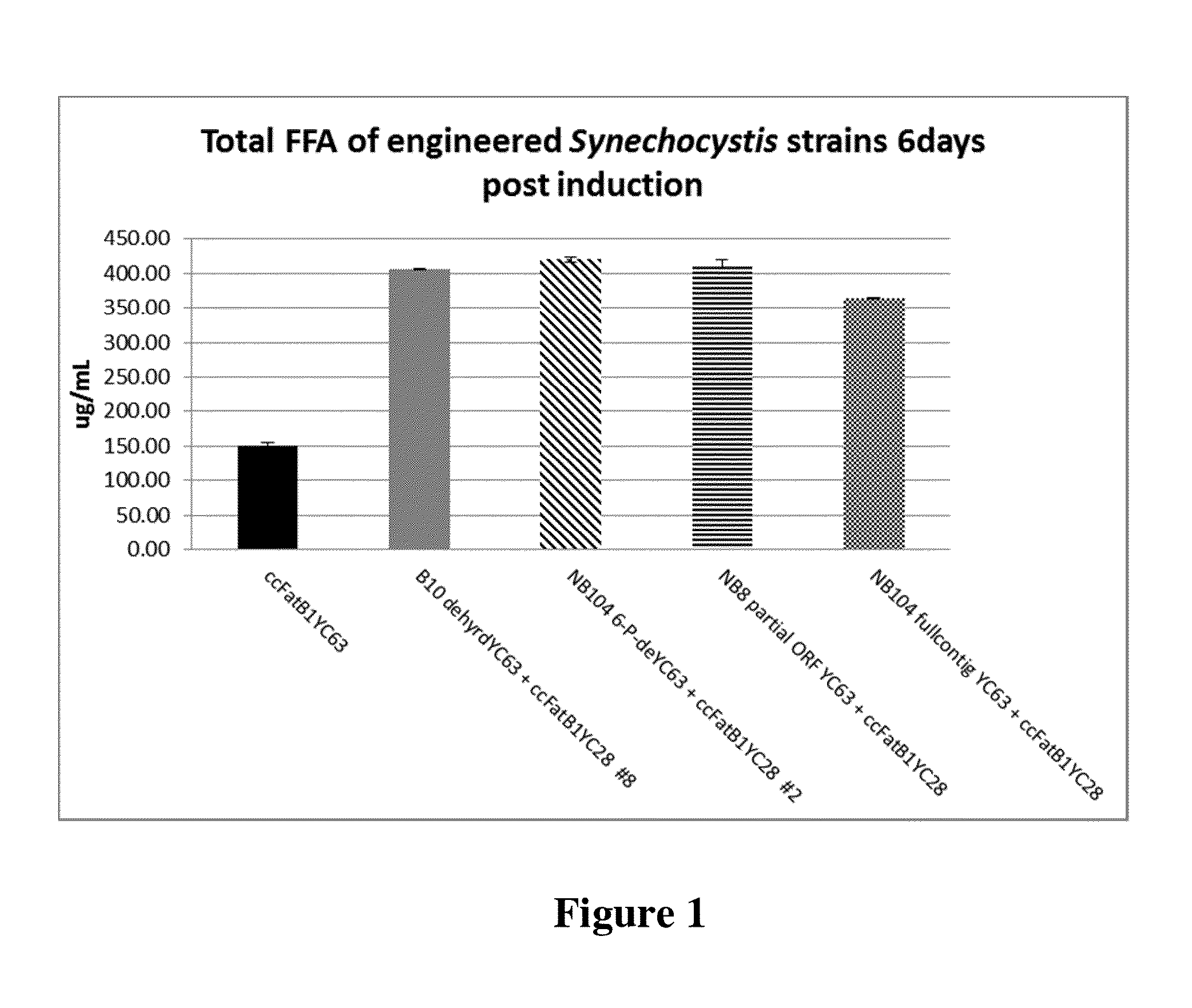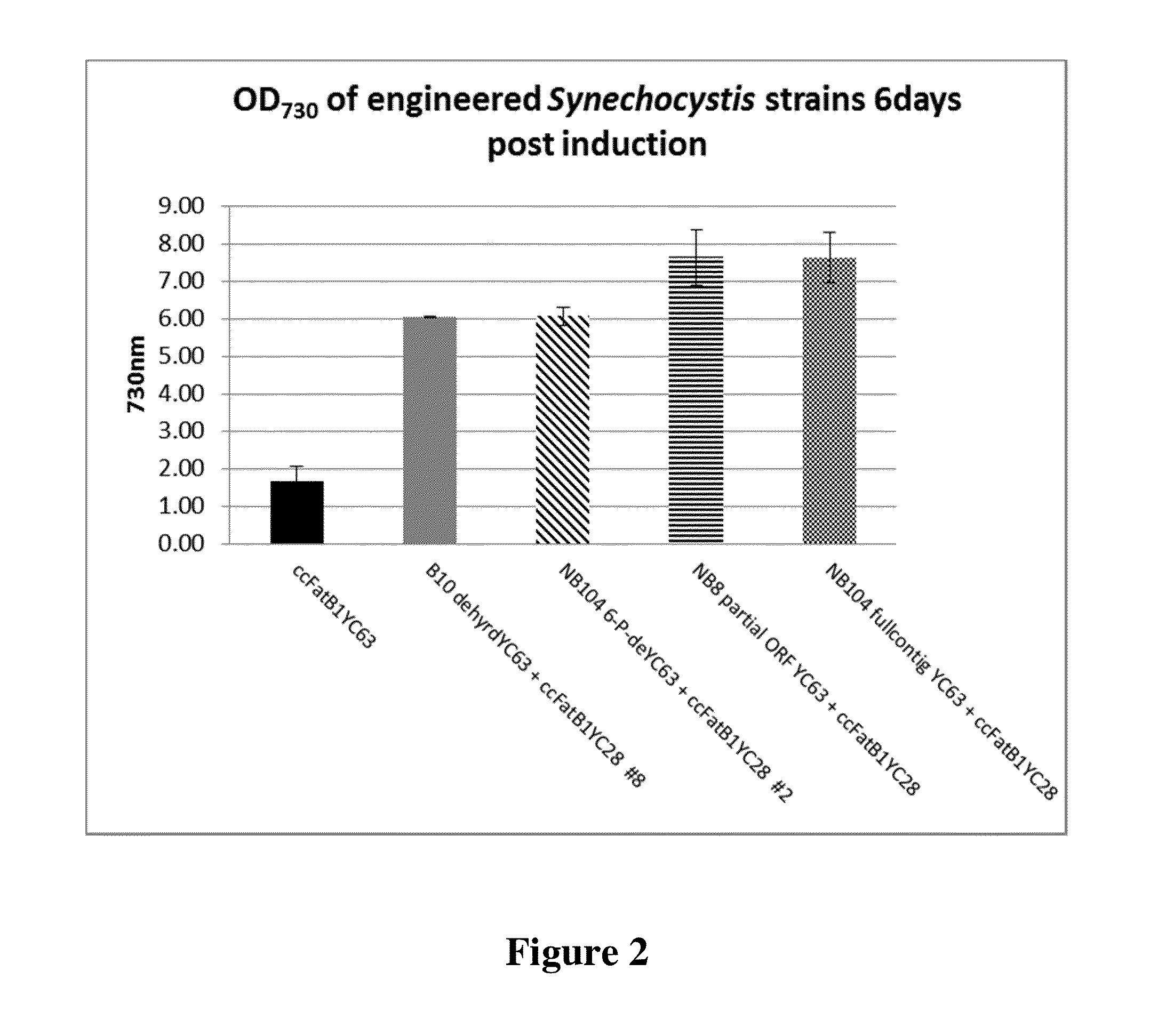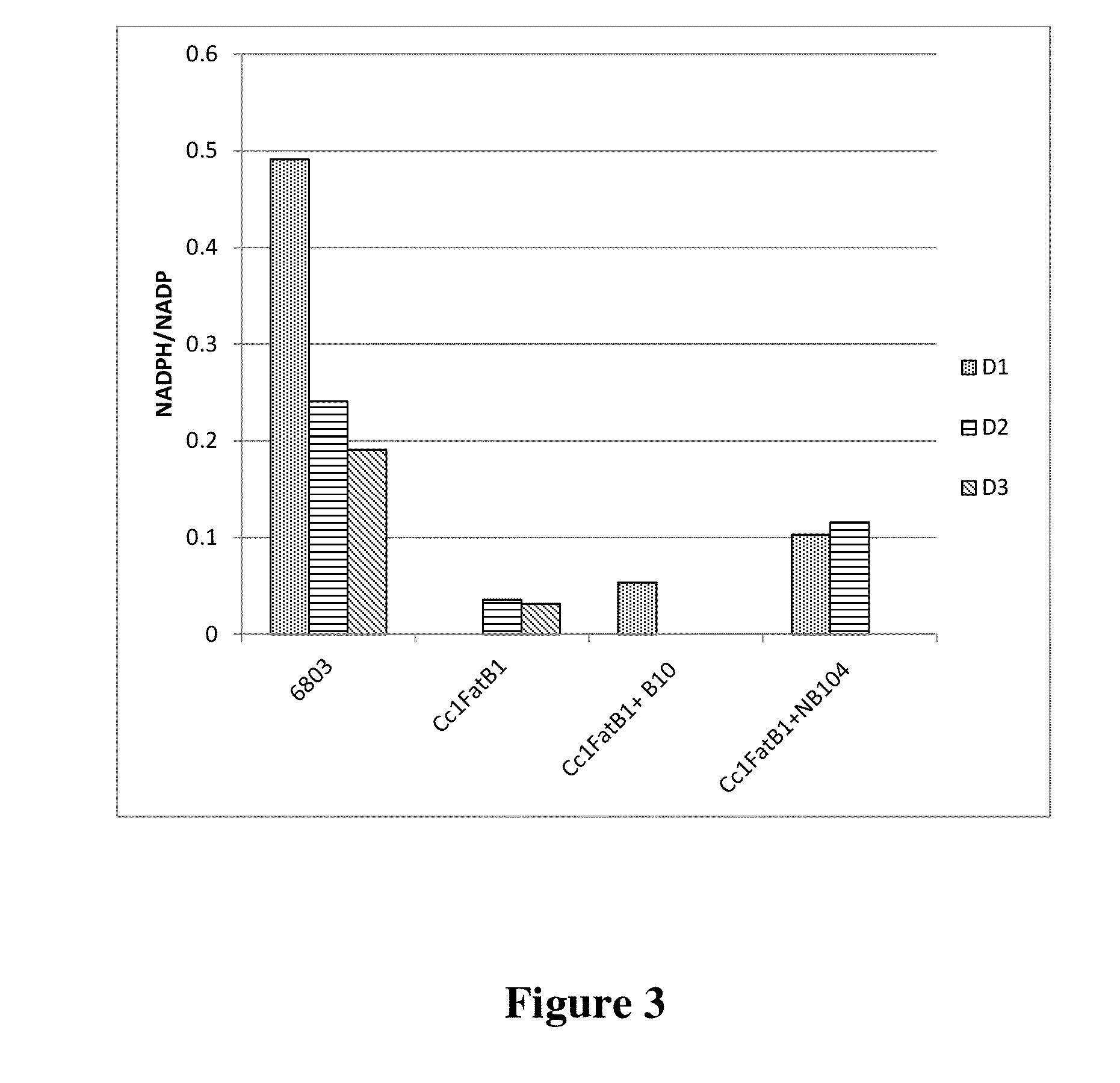Cell systems and methods for improving fatty acid synthesis by expression of dehydrogenases
a dehydrogenase and cell system technology, applied in microorganisms, organic chemistry, enzymes, etc., can solve the problems of driving up the price of the world's food supply, and achieve the effect of increasing the propagation rate and/or the proliferation, and increasing the cell density
- Summary
- Abstract
- Description
- Claims
- Application Information
AI Technical Summary
Benefits of technology
Problems solved by technology
Method used
Image
Examples
example 1
[0224]Screens were designed for identification of genes encoding proteins that were able to enhance fatty acid production by microbes. The Nile Blue screen used an E. coli Top 10 strain that carried an N-terminally truncated version of the Cc1FatB1 acyl-ACP thioesterase from Cuphea carthagenensis (nucleotide sequence codon-optimized for Synechocystis, SEQ ID NO:20, amino acid sequence SEQ ID NO:21; see US 2011 / 0020883, incorporated by reference herein) as the background for transformation of a metagenomic library containing DNA fragments from an environmental sample removed from a shipping channel in Laguna Madre, Tex. A plate-based assay was used to identify recombinant E. coli colonies producing free fatty acids on a solid media that contained 10 μg / mL Nile Blue A (Alfa Aesar, Ward Hill, Mass. #A17174). Nile blue stains fatty acids blue. Colonies were examined by visual inspection for staining by positioning plates on a standard light box. Colonies displaying a high level of Nile ...
example 2
[0233]Cloned DNA fragments of several of the sequenced clones, including NB8, NB104, and B10 strain (under the control of the IPTG-inducible trcY promoter (SEQ ID NO:22)), were subsequently transformed into a Synechocystis PCC 6803 that included an integrated Cc1FatB1 acyl-ACP thioesterase gene at a different locus.
[0234]The N-terminally truncated Cc1FatB1 acyl-ACP thioesterase gene (SEQ ID NO:20) was cloned into Synechocystis integration vector YC28 (SEQ ID NO:23) which included a PISA origin of replication for E. coli, “RS1 up” (SEQ ID NO:24) and “RS1 down” (SEQ ID NO:25) fragments for homologous recombination in Synechocystis 6803, a lacIQ repressor for the IPTG-inducible trcE driven Cuphea Cc1FatB1 thioesterase gene and a kanamycin resistance marker for selection. DNA source material for PCR amplification of segments of the vector came from Synechocystis genomic DNA, a pUC-19 vector, a pACYC-184 vector, and a vector containing a synthesized Cuphea Cc1FatB1 gene (DNA2.0, Menlo Pa...
example 3
[0240]To further investigate the effects of expressing genes that enhanced fatty acid production, Synechocystis strains engineered to express the B10 (2-hydroxyacid dehydrogenase NAD-binding domain protein) gene and the NB 104 (6-phosphogluconate dehydrogenase) gene together with a Cc1FatB1 acyl-ACP thioesterase gene were assessed for their ability to alter the redox state of the cells. As a control, the Cc1FatB1 gene integrated at the RS2 site integration vector pSGI-YC63 (1A / YC63) was expressed in independent Synechocystis 6803 strains that did not have an additional dehydrogenase gene. Synechocystis 6803 having no transgenes (“6803”) was included as a further control. Cells were grown under constant light at 60 uE with shaking, and induced with the addition of 1 mM IPTG at an OD730 of 0.5 to express the thioesterase and, where present, the putative dehydrogenase. Samples were collected every 24 hours for three days.
[0241]To determine the redox state of the Synechocystis strains e...
PUM
| Property | Measurement | Unit |
|---|---|---|
| temperature | aaaaa | aaaaa |
| temperature | aaaaa | aaaaa |
| temperature | aaaaa | aaaaa |
Abstract
Description
Claims
Application Information
 Login to View More
Login to View More - R&D Engineer
- R&D Manager
- IP Professional
- Industry Leading Data Capabilities
- Powerful AI technology
- Patent DNA Extraction
Browse by: Latest US Patents, China's latest patents, Technical Efficacy Thesaurus, Application Domain, Technology Topic, Popular Technical Reports.
© 2024 PatSnap. All rights reserved.Legal|Privacy policy|Modern Slavery Act Transparency Statement|Sitemap|About US| Contact US: help@patsnap.com










